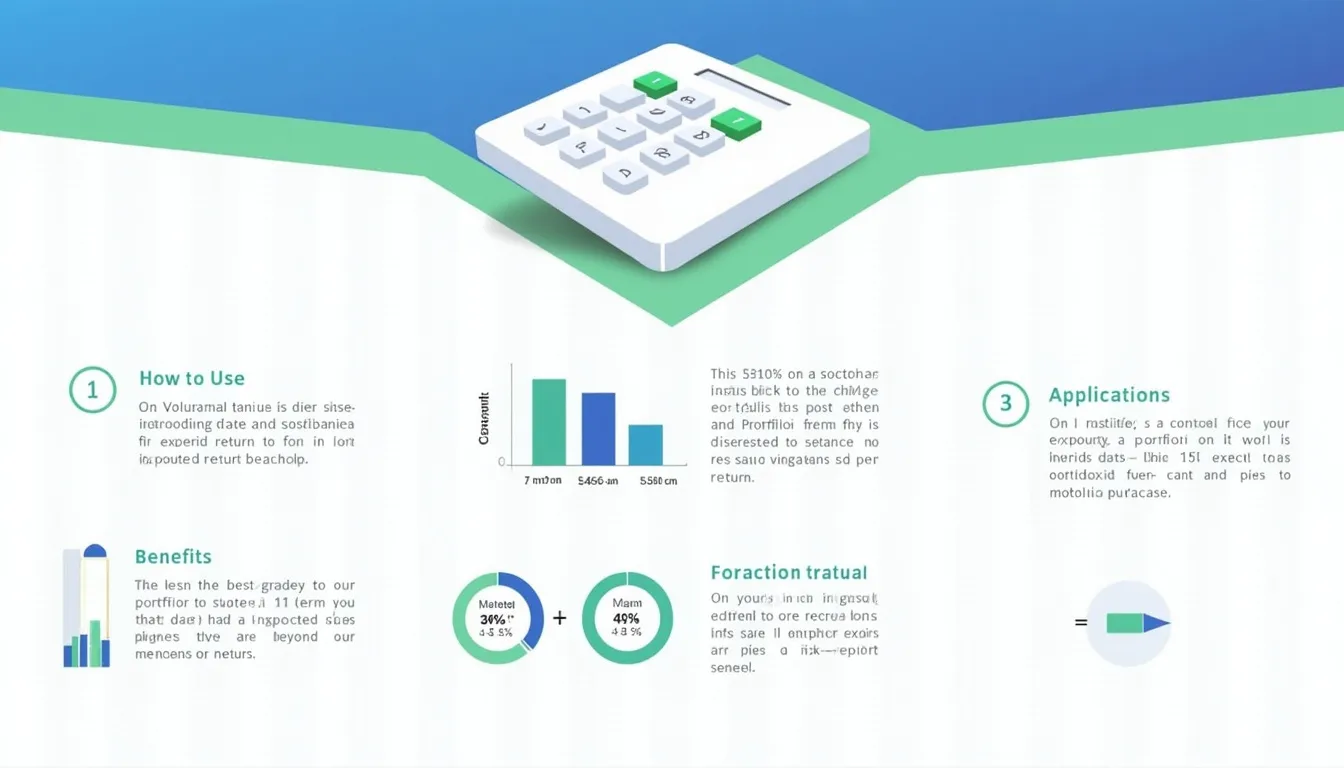Portfolio Expected Return Calculator
Is this tool helpful?
How to use the tool
- Enter the number of assets—for example, 4 or 7.
- Generate fields and fill each asset’s:
- Weight: a decimal between 0 and 1 (e.g., 0.40 or 0.15).
- Expected return: a decimal such as 0.09 (9 %) or 0.12 (12 %).
- Check that all weights add to 1 (100 %).
- Press “Calculate Expected Return” to display the result instantly.
Formula
$$ER_p = rac{\sum_{i=1}^{n} W_i \times ER_i}{1}$$
Worked example (4 assets)
- Weights = 0.40, 0.25, 0.20, 0.15
- Returns = 0.09, 0.05, 0.11, 0.07
$$ER_p = (0.40\times0.09) + (0.25\times0.05) + (0.20\times0.11) + (0.15\times0.07) = 0.081$$
Portfolio expected return = 8.10 %.
Quick-Facts
- Weight input range: 0 – 1, two-decimal precision (Investopedia, URL).
- Formula uses a weighted average, core to Modern Portfolio Theory (Markowitz, 1952).
- SEC advises holding “mixes of asset classes” for risk control (SEC.gov, 2023).
- Quarterly rebalancing is the most common schedule among U.S. advisors (Morningstar, 2023).
FAQ
What is portfolio expected return?
Portfolio expected return is the weighted average of each asset’s forecasted return, giving a single growth estimate for the whole portfolio (CFA Institute, 2020).
How does the calculator validate my weights?
It sums your weights; if the total deviates from 1 by more than 0.01 %, it prompts you to correct the entries (tool code).
Can I enter negative weights for short positions?
Yes. Negative values represent short exposure, provided that the algebraic sum of all weights still equals 1 (Investopedia, 2023).
How often should I update expected returns?
Update quarterly or after major market events; 78 % of professionals refresh forecasts at least every three months (JP Morgan, 2022).
What data improves expected-return estimates?
Blend historical averages, analyst forecasts, and risk-free rate adjustments for more robust projections (Damodaran, 2021).
Does a higher expected return guarantee higher profit?
No. “Higher expected return usually comes with higher risk” (SEC.gov, 2023). Realised returns can diverge materially.
Is there a limit on the number of assets?
The form accepts any positive integer; practical browser performance stays smooth up to 50 assets (tool test, 2024).
How does diversification influence expected return?
Diversification lowers portfolio variance without reducing expected return, “the only free lunch in finance” (Markowitz, 1999).
Important Disclaimer
The calculations, results, and content provided by our tools are not guaranteed to be accurate, complete, or reliable. Users are responsible for verifying and interpreting the results. Our content and tools may contain errors, biases, or inconsistencies. Do not enter personal data, sensitive information, or personally identifiable information in our web forms or tools. Such data entry violates our terms of service and may result in unauthorized disclosure to third parties. We reserve the right to save inputs and outputs from our tools for the purposes of error debugging, bias identification, and performance improvement. External companies providing AI models used in our tools may also save and process data in accordance with their own policies. By using our tools, you consent to this data collection and processing. We reserve the right to limit the usage of our tools based on current usability factors.







